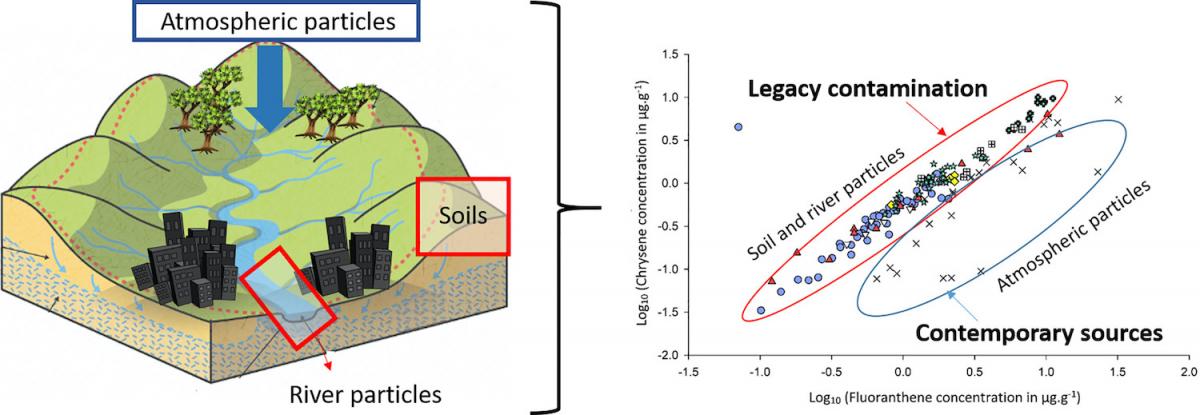Innovative combination of tracing methods to differentiate between legacy and contemporary PAH sources in the atmosphere-soil-river continuum in an urban catchment (Orge River, France)
Claire Froger, Sophie Ayrault, Johnny Gasperi, Emilie Caupos, Gaël Monvoisin, et al.. Innovative combination of tracing methods to differentiate between legacy and contemporary PAH sources in the atmosphere-soil-river continuum in an urban catchment (Orge River, France). Science of the Total Environment, Elsevier, 2019, ⟨10.1016/j.scitotenv.2019.03.150⟩. ⟨hal-02067746⟩
Abstract
Polycyclic aromatic hydrocarbons (PAH) have been released by human activities during more than a century, contaminating the entire atmosphere – soil – river continuum. Due to their ubiquity in the environment and their potential severe biological impacts, PAH became priority pollutants and were targeted by environmental public agencies. To better manage PAH pollution, it is necessary to identify unambiguously the sources and pathways of those compounds at the catchment scale, and to evaluate the persistence of historical PAH pollution in the environment especially in those urban contexts concentrating multiple PAH sources. Accordingly, the current research monitored the contamination in atmospheric fallout, soils and rivers of a 950-km2 catchment (Orge River) characterized by an increasing urban gradient in downstream direction, and located in the Seine River basin characterized by a high level of PAH legacy contamination. A combination of various approaches was used, including the widely used PAH diagnostic ratios, together with innovative methods such as PAH correlations and sediment fingerprinting using fallout radionuclides to clearly identify both the origin of PAH and their main PAH pathways to the river. The results demonstrated the persistence of legacy PAH contamination in the catchment, responsible for the signature of the suspended particulate matter currently transiting in the Orge River. They underlined the conservation of PAH through the soil – river continuum. Finally, urban runoff was demonstrated to provide the main PAH source to the river in the densely urbanized area by both PAH correlations and sediment fingerprinting. These results were used to model PAH concentrations in those particles supplied from urban areas to the river.

Keywords
PAH ratios, Urban runoff, Legacy contamination, Sediment fingerprinting
Highlights
- Combination of multiple tracing approaches to identify PAH sources in the catchment
- Comparison of current PAH contamination with contemporary and legacy PAH signatures
- Legacy PAH contamination responsible for the current river and soil contaminations
- Persistence of PAH in soils and sediments throughout time
- Fallout radionuclides confirming urban runoff as the main pathway of PAH to the river
